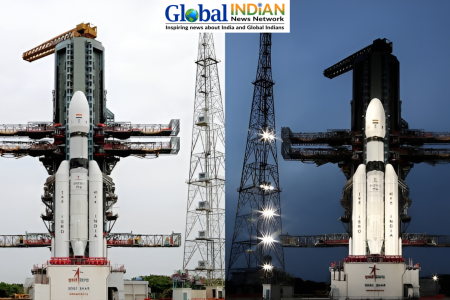 Prime Minister Narendra Modi has officially confirmed the successful arrival of Aditya-L1, India’s inaugural solar observatory. Launched on September 2, 2023, by the Polar Satellite Launch Vehicle, the spacecraft has now reached the Halo orbit at Sun-Earth Lagrange Point 1. Aditya-L1 is equipped with seven distinct payloads designed to observe the Sun’s photosphere, chromosphere, and corona using electromagnetic and particle detectors.
Prime Minister Narendra Modi has officially confirmed the successful arrival of Aditya-L1, India’s inaugural solar observatory. Launched on September 2, 2023, by the Polar Satellite Launch Vehicle, the spacecraft has now reached the Halo orbit at Sun-Earth Lagrange Point 1. Aditya-L1 is equipped with seven distinct payloads designed to observe the Sun’s photosphere, chromosphere, and corona using electromagnetic and particle detectors.
Positioned strategically at L1, where the gravitational pull of the Sun and Earth is equal, Aditya-L1 is set to provide essential scientific data on coronal heating, mass ejections, and the dynamics of space weather. The mission’s objectives include studying the chromosphere and corona’s upper atmospheric dynamics, exploring the physics of partially ionized plasma, and initiating research on coronal mass ejections and flares.
In addition to examining the Sun’s thermal and magnetic phenomena, Aditya-L1 aims to understand the drivers for space weather, including the origin, composition, and dynamics of solar wind. The Sun, estimated to be 4.5 billion years old, plays a vital role as the primary source of energy for the solar system, with its gravity holding celestial bodies together.
The mission’s significance lies in its potential to provide early warnings for explosive solar phenomena that could disrupt spacecraft and communication systems. The Sun’s dynamic nature, extending beyond what is visible, offers a unique natural laboratory to study phenomena that cannot be directly observed in a controlled environment.
All seven payloads carried by Aditya-L1 are developed indigenously by various laboratories in India. These payloads include instruments like the Visible Emission Line Coronagraph (VELC), Solar Ultraviolet Imaging Telescope (SUIT), Aditya Solar wind Particle Experiment (ASPEX), Plasma Analyser Package for Aditya (PAPA), Solar The instruments include the Low Energy X-ray Spectrometer (SoLEXS), the High Energy X-ray Spectrometer in L1 Orbit (HEL1OS), and the Magnetometer.
In summary, Aditya-L1 represents a significant stride in India’s space exploration endeavors, aiming to unravel the complexities of the Sun and contribute valuable insights to the understanding of solar dynamics and its implications for Earth and space.













